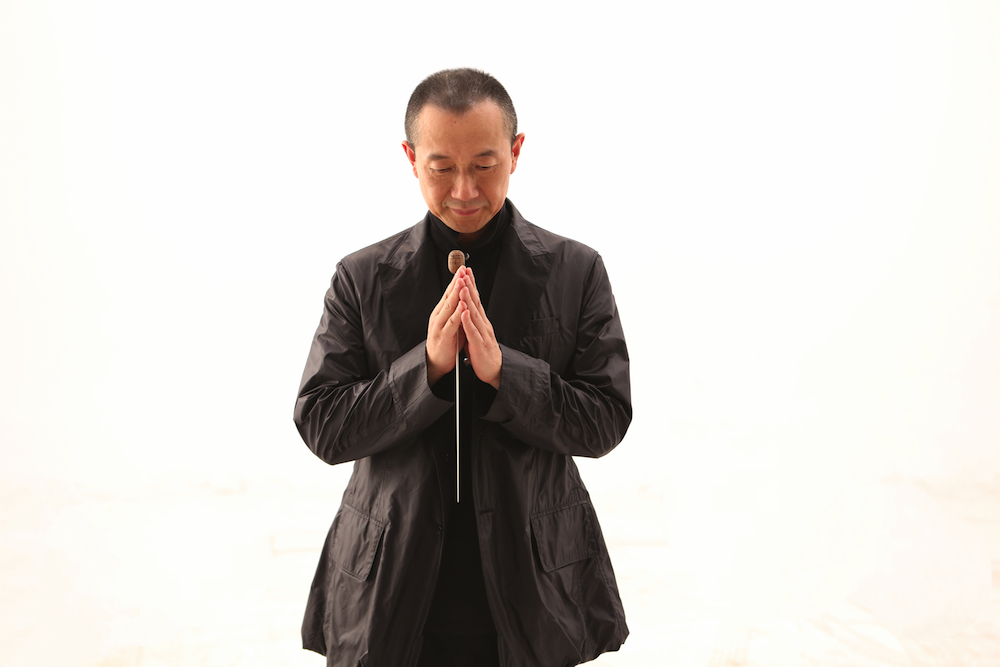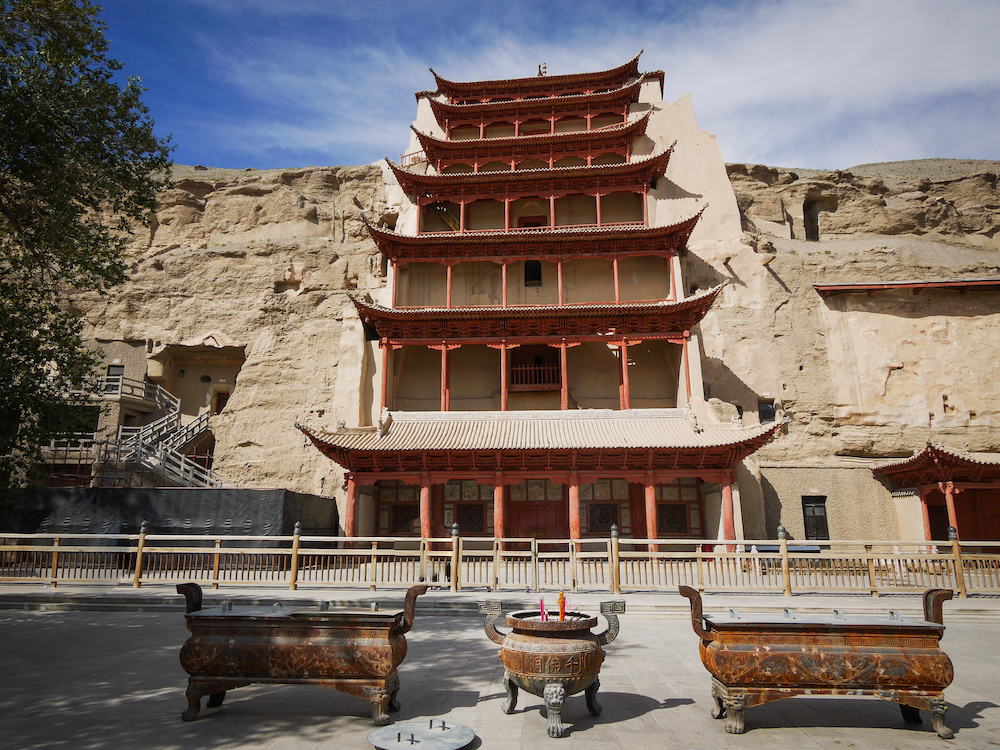“My religion is music,” composer Tan Dun says. “Only music can embrace all kinds of cultures.”
The Chinese composer, whose work spans everything from his stunning score to the film Crouching Tiger Hidden Dragon to experimental music drawing on unusual sound sources, will conduct the Australian premiere of his new large-scale choral work Buddha Passion with the Melbourne Symphony Orchestra in October as part of the Melbourne Festival. The piece, a co-commission between the MSO, the Dresdner Musikfestspiele (where it received its world premiere), the New York Philharmonic and the Los Angeles Philharmonic, sets teachings of the Buddha in six parts, in what has been described as the first Buddhist Passion in a history of Christian oratorios.
In fact, the idea for the Buddha Passion had its origins in a response to the Christian Passions of Bach. Dun’s Water Passion after St. Matthew was commissioned by the Internationale Bachakademie Stuttgart who premiered it in the year 2000, conducted by Dun. The Water Passion, which features vocal styles from Mongolian overtone singing to Peking Opera as well as traditional instruments found along the Silk Road and the music of water itself, paid tribute to Bach but in Dun’s own distinctive language.
“A German critic said, ‘oh, this is Buddha Bach,’” Dun explains. “It’s like a Buddha Passion. That actually gave me a very interesting idea: I said, ‘Why don’t I write a Buddha Passion?’”
 Tan Dun
Tan Dun
It would take years of research for the Passion to actually come to pass, however, during which time Dun explored the Mogao Caves, a vast network of caves south-east of the Dunhuang oasis in Gansu province. The caves, which were an important stop along the Silk Road, are now a UNESCO World Heritage listed site, housing thousands of paintings and manuscripts, the greatest achievement in Buddhist art from the 4th to the 14th centuries.
“In those caves, there are thousands of paintings – cave paintings – about music, musical instruments and orchestras,” Dun says. “All these manuscripts and musical stories fascinated me deeply and I wanted to transpose those ancient paintings into an opera.”
The composer chased instrument and manuscript collections at museums in London, Paris and Japan and cites more than 12,000 Buddhist stories spanning civilisations including India, Nepal and China. “How could I condense these 12,000 stories into six short stories? It takes a lot of time,” he explains.
It was the paintings themselves that fascinated him most, however. “[What] touched me deeply is the beauty of these paintings,” he says. “And also the compassionate, gentle and peaceful minds of these people who painted those cave paintings thousands of years ago.”
“They are not professional paintings like a Michelangelo or a Da Vinci,” he explains. “They are just regular people.”
“I was so fascinated, thinking, how could I transpose this beauty into today’s media – musicians, symphony orchestra, chorus, singers? That’s a big challenge,” he says.
 The Mogao Caves
The Mogao Caves
Much of the music discovered in the caves was written for single lines of a specific instrument. “At that time the composers were instrument players, like medieval music in the West,” Dun explains. “So the ancient music manuscripts are mostly ancient pipa music or ancient singing music – one line, like medieval chanting.”
As in Water Passion, the voice features prominently in Buddha Passion. “The piece focuses on the beautiful singing of the human voice and also very colourful orchestration,” Dun says. “But the most colourful thing is the Buddha’s teaching, wisdom and philosophy – the Buddha’s compassionate teaching about how to be a peaceful man. I think those dramatic stories – very, very dramatic, about dance, death, about peace, about life beyond – I think it is just so meaningful to today’s world.”
Buddha Passion is divided into six parts, each of which focusses on a story from Buddhist philosophy – from the story of The Bodhi Tree through The Deer of Nine Colours, A Thousand Arms and A Thousand Eyes, Zen Garden, Heart Sutra, and finally Nirvana.
“After every story there is always a choral piece – it’s like the St Matthew Passion,” explains Dun.
These commentaries on the stories are each described as an Ode to Compassion, with subtitles Equality, Karma, Sacrifice, Zen Dreams, The Heart Sutra and Heaven Earth Mankind.
The spiritual subject matter is also reflected in the music itself. “In Water Passion, I used a lot of sounds of nature, sound of water, sound of stones, sound of wind,” says Dun. “So in this piece, I also used a lot of sounds of nature, because the Buddhist philosophy always embodies nature and treats nature as one part of your body.”
It’s music, however, that Dun finds most spiritual. “I am much more devout in my music now, towards education, towards philosophy and towards spirituality,” Dun says. “Because I find music is sometimes beyond history – it can continue history. That’s why to me the Buddha Passion is a piece of mine trying to orchestrate this uniting power of human history, from a different culture.”
Dun, whose film music has bagged him a Grammy, a BAFTA Award and an Oscar, explains that in addition to beautiful sound and melody, he wanted to infuse Buddha Passion with a cinematic power – that people will experience it like listening to a monumental film. “It’s a drama for chorus and orchestra,” he says. “Like a symphonic movie.”
The Melbourne Symphony Orchestra performs Buddha Passion at Hamer Hall on October 6











Comments
Log in to join the conversation.